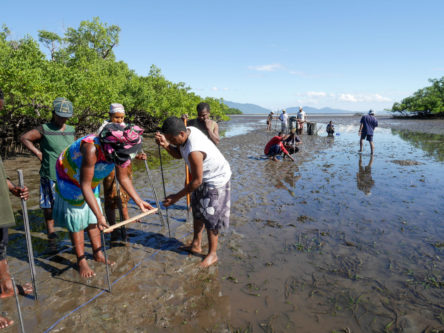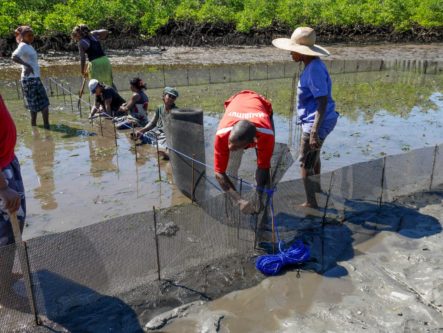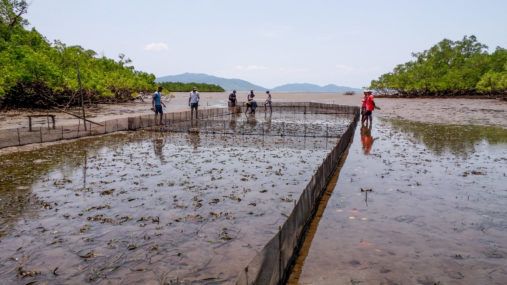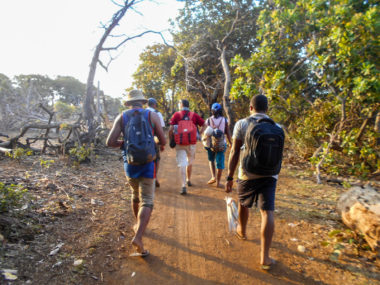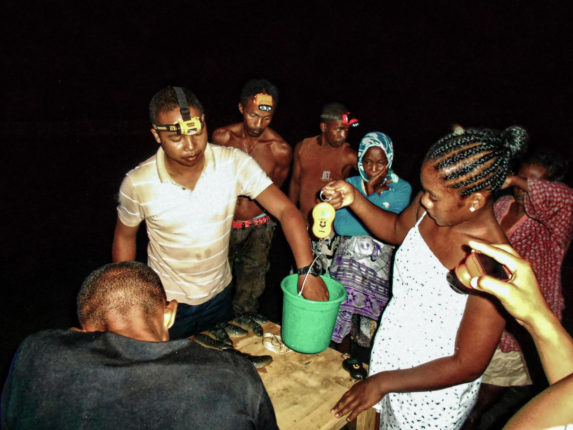Ambiky and Abolobozo are small coastal villages in Ambanja Bay, Northwest Madagascar, and the communities here, like coastal communities throughout Madagascar, are highly dependent on traditional small-scale fisheries for their livelihoods and dietary protein. However, due to the increasing pressures of global overfishing and climate change, coastal communities worldwide are having to diversify their livelihoods in order to survive, and Ambiky and Ambolobozo are no exceptions.
Both villages have responded to the critical need for alternative livelihoods by engaging in sea cucumber farming, locally called “Dingadigana”, with technical support from Blue Ventures. Sea cucumber farming is a promising livelihood, because sea cucumbers are currently the most valuable marine product in the country. Most people from coastal communities in Madagascar earn, on average, less than $2/day, but due to a high East Asian demand the largest sea cucumbers can be sold for up to $6!
After seven months of growing in pens, sea cucumbers can be sold for up to 50 times the price of immature individuals!
This high value and demand has led to wild sea cucumbers being unsustainably over-exploited, with production dropping by 87% between 1995 and 2014. It is no longer possible to make a living harvesting wild sea cucumbers as mostly only small and low-value individuals remain. However, the market value of sea cucumbers increases exponentially with size, so farming them is an innovative solution.
Recently we visited both Ambiky and Ambolobozo to assess the progress that had been made in the first six months of sea cucumber farming. Walking out to the pens at low tide, we got to see for ourselves the impressive results of the villagers’ efforts. Each village has constructed one large farming pen, divided into three 100m2 sections, and each pen has a surrounding fence about 70cm high, and the ability to support 350g/m2 of sea cucumber.
To help them build on this positive start, we were able to offer some technical advice. Some sea cucumbers have the ability to swell with water and become neutrally buoyant, allowing them to leave the pens with the outgoing tide, but this can be avoided by constructing fences with a slight overhang.
We were also able to witness the monitoring process that happens twice a month during spring low tide. Late at night, once the sea cucumbers had emerged from the mud, the villagers weighed all of the sea cucumbers according to specific sampling protocols in order to accurately monitor the fattening progress. They found that in some of the pens, the sea cucumbers have been growing as fast as 2.2 g/day, a very high rate even when compared to semi-intensive sea cucumber farms in other countries!
Maintaining these high rates of growth is not an easy task, and can be demanding for the communities: the pens require regular cleaning, the monitoring can only occur at night when the sea cucumbers emerge, security guards have to look after the pens every night to prevent thefts, and all potential predators such as crabs must be removed from the pens.
The time spent working on these sea cucumber farms is time that could be spent fishing, but the villagers have been working hard regardless, and the hope is that they will be rewarded for their efforts with a sustainable alternative income. There is also a chance that the aggregation of many sexually mature sea cucumbers in the pens may help with sea cucumber repopulation in nearby areas.
The villagers of Ambiky and Ambolobozo may not be able to control the rate of climate change, or the number of foreign fishing vessels off the coast of Madagascar, but through hard work, perseverance and a willingness to adapt they are taking positive steps towards an alternative and sustainable livelihood.
The sea cucumber farms in Ambiky and Amboloboze are supported financially by GIZ and the Helmsley Charitable Trust.
Credit for all photos in this blog goes to Andry Randriambololona unless otherwise specified in the caption.


